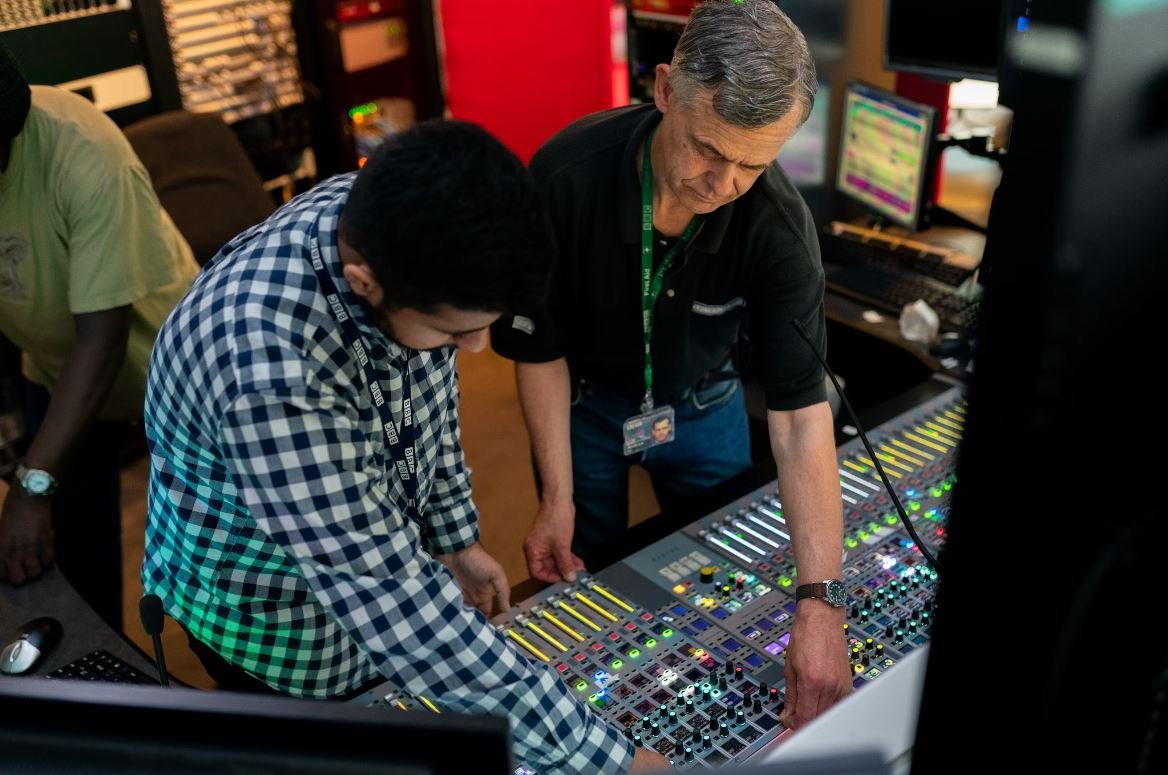Deepfake AI Wikipedia
Deepfake AI has revolutionized the world of artificial intelligence and become an important aspect of modern media creation and manipulation. By using complex algorithms and deep learning techniques, deepfake AI has the ability to create highly realistic videos, images, and even audio that are indistinguishable from genuine content.
Key Takeaways:
- Deepfake AI is a powerful technology that can create highly realistic fake videos and images.
- It uses complex algorithms and deep learning techniques to generate convincing content.
- Deepfake AI has both positive and negative implications for various industries, including media and entertainment, politics, and cybersecurity.
**Deepfake AI** relies on **neural networks** to analyze and learn from vast amounts of data, enabling it to accurately mimic the appearance and behavior of a target person. *This technology introduces significant ethical concerns, particularly regarding the potential for misuse or misinformation.*
Deepfake AI technology has been primarily associated with the creation of fake videos that manipulate the actions and words of individuals. *These manipulated videos can be used to spread false information or defame someone’s character.* Additionally, deepfake AI has also been used in the entertainment industry to create digital doubles of actors and bring extinct species to life through realistic animations.
How Does Deepfake AI Work?
- Deepfake AI first gathers a large dataset of images, videos, or audio of the target person.
- The algorithm analyzes and extracts patterns from the dataset to create a **neural network** model.
- Using this model, the AI system generates new synthetic data that closely resembles the target person.
- The generated data is combined and edited to create a convincing deepfake video or image.
Deepfake AI has sparked concerns about its potential impact on various industries, including politics and cybersecurity. *As deepfake technology advances, it becomes increasingly difficult to differentiate between real and manipulated content, raising serious implications for trust and authenticity.*
Applications of Deepfake AI:
- Media and entertainment: Deepfake AI is used to create realistic special effects, digital doubles, and CGI animations in movies and video games.
- Politics: Deepfake AI can be used to create fake political speeches or videos, potentially influencing public opinion or spreading misinformation.
- Cybersecurity: Deepfake AI can be used to impersonate individuals, making it challenging to verify identities and potentially facilitating identity theft or fraud.
| Pros and Cons of Deepfake AI | |
|---|---|
| Pros | Cons |
|
|
**Notable deepfake incidents** have raised awareness about the potential risks associated with this technology. In 2018, a deepfake video featuring former President Barack Obama went viral on social media. *This incident highlighted the degree to which deepfake AI can blur the line between truth and fiction.*
The Future of Deepfake AI
While the risks and challenges of deepfake AI cannot be ignored, the technology also offers potential benefits in various fields. Researchers are actively working on developing countermeasures to identify and combat deepfake content. By improving detection algorithms and raising awareness, society can better navigate the increasingly complex landscape of media manipulation.
Deepfake AI continues to evolve and pose new challenges for society. As technology advancements continue, it is important to stay informed and critically evaluate the authenticity of media content.
| Type of Deepfake AI | Applications |
|---|---|
| Video | – Creating realistic visual effects – Manipulating speeches and interviews – Generating fake news videos |
| Audio | – Mimicking someone’s voice – Generating synthetic speech – Creating virtual assistants |
| Image | – Creating fake photos – Altering facial expressions – Generating art or visuals |
Deepfake AI is reshaping the way we perceive and consume media. As technology advances, it is essential to understand the potential risks and benefits associated with this powerful AI tool.

Common Misconceptions
Misconception 1: Deepfake AI is only used for malicious purposes
One common misconception about Deepfake AI is that it is exclusively used for malicious activities, such as spreading fake news or creating deceptive content. While it is true that Deepfake technology can be misused, it also has numerous positive applications.
- Deepfake AI can be used in the entertainment industry for creating realistic CGI characters or enhancing special effects in movies.
- It can aid in the development of virtual reality and augmented reality experiences, improving immersion and realism.
- Deepfake AI can also assist in medical training and simulations, allowing healthcare professionals to practice complex procedures in a safe environment.
Misconception 2: Deepfake AI is always easily detectable
Another common misunderstanding is that Deepfake AI is always easily detectable. In reality, as the technology advances, it becomes increasingly difficult for humans to distinguish between real and deepfake content.
- Deepfake AI algorithms continuously improve, making it challenging for traditional methods of detection to keep up.
- The combination of AI with image and video tampering techniques further enhances the realism of deepfake content.
- As a result, sophisticated deepfakes can be indistinguishable from authentic videos, posing significant challenges for content verification.
Misconception 3: Deepfake AI can replace professional actors and performers
There is a misconception that Deepfake AI can entirely replace professional actors and performers. While the technology can replicate their appearances, it cannot reproduce their talent, emotions, and experiences.
- Professional actors possess unique skills that go beyond physical appearance, including acting abilities, voice modulation, and emotional expressions.
- Deepfakes lack the authenticity and depth that comes from years of training and experience in the performing arts.
- The human touch, improvisation, and creative choices made by actors cannot be replicated by AI algorithms.
Misconception 4: All news and media content can be deepfaked
Some people believe that all news and media content can be deepfaked, leading to widespread skepticism and distrust in the media. However, deepfake technology still has limitations and cannot fabricate every piece of content.
- Deepfake AI requires significant computing power and resources to generate high-quality and convincing deepfakes. Thus, it is not easily accessible to everyone.
- Deepfaking complex or large-scale events, such as live broadcasts or large public gatherings, is technically challenging due to the unavailability of sufficient source material.
- While deepfake technology can be a concern, it is important to maintain critical thinking and rely on multiple sources when consuming news and media.
Misconception 5: Deepfake AI is a recent development
Many people mistakenly assume that Deepfake AI is a recent development, but its origins can be traced back several years. The term “deepfake” itself was coined in 2017, but the underlying technologies and techniques have been in development for much longer.
- Research in artificial intelligence, computer vision, and machine learning, which are crucial for deepfake algorithms, has been ongoing for decades.
- Earlier versions of image and video manipulation tools paved the way for the advanced deepfake technology we see today.
- The exponential growth of deepfake usage in recent years is more a reflection of societal awareness and accessible tools rather than the emergence of a brand-new technology.

Deepfake AI Usage
Deepfake AI technology is being increasingly used in various fields, including entertainment, politics, and research. The following table showcases some notable examples of deepfake AI usage.
| Example | Description |
|—————————————–|—————————————————————————–|
| Deepfake Videos | Artificial intelligence is used to manipulate videos, often for entertainment purposes. For example, celebrities’ faces can be swapped onto other individuals’ bodies in movies or music videos, creating humorous or unexpected scenes. |
| Political Manipulation | Deepfake AI has the potential to be misused for political purposes. Political figures’ speeches and appearances can be manipulated, leading to misinformation or false accusations. |
| Voice Synthesis | Artificial intelligence can replicate human voices, creating convincing deepfake audios. This poses risks in generating fake phone calls, voice messages, or impersonation. |
| Biometric Security | Deepfake AI can be used to trick biometric security systems, such as facial recognition. This raises concerns about the effectiveness and reliability of such systems for identity verification. |
| Educational Tools | Deepfake technology can be utilized for educational purposes, allowing students to experience historical events or interact with virtual replicas of famous individuals. |
| Medical Research | Deepfake AI can aid medical research by simulating various diseases and conditions. Researchers can use these simulations to analyze and study different scenarios and treatment methods. |
| Virtual Reality Enhancement | Deepfake technology can enhance virtual reality experiences by improving the realism of virtual environments, characters, and interactions. |
| Journalism and Reporting | Journalists can use deepfake AI to recreate interviews or events that occurred in inaccessible locations, increasing their ability to provide comprehensive news coverage. |
| Video Game Development | Deepfake AI can be used in video game development to create lifelike characters, facial expressions, and realistic animations, making the gaming experience more immersive and engaging. |
| Music Composition | Artificial intelligence can analyze musical patterns and create deepfake compositions in the style of renowned musicians. This opens up new possibilities for music creation and exploration. |
Concerns Surrounding Deepfake AI
The rise of deepfake AI technology has raised several concerns. The table below illustrates some of the main concerns associated with deepfake AI.
| Concern | Description |
|—————————————–|—————————————————————————–|
| Misinformation | Deepfake AI can be used to generate and spread false information, further contributing to the spread of misinformation on social media and other platforms. |
| Privacy Invasion | Individuals’ personal information and images can be manipulated and misused through deepfake AI, resulting in privacy violations and potential harm to reputation. |
| Security Threats | Deepfake AI can be exploited for malicious purposes, such as creating fake evidence, scamming, or even blackmailing unsuspecting victims. |
| Trust and Authenticity | The increasing prevalence of deepfakes challenges the reliability and trustworthiness of media, as it becomes more difficult to distinguish between authentic and manipulated content. |
| Legal and Ethical Implications | The use of deepfake AI raises complex legal and ethical questions. Issues such as consent, copyright infringement, and accountability need to be addressed to regulate its use. |
| Election Interference | Deepfake AI has the potential to disrupt elections by spreading misinformation, creating fabricated content to manipulate public opinion, and targeting political figures. |
| Damage to Reputation | Individuals, organizations, or companies can suffer significant harm to their reputation if they become targets of deepfake AI manipulation and the falsified content goes viral. |
| Psychological Impact | The widespread use of deepfake AI may have psychological consequences, such as eroding trust, distorting reality, and increasing skepticism towards media and visual evidence. |
| Bias Amplification | Deepfake AI can amplify existing biases and stereotypes, leading to further discrimination or the spread of hate speech. It exacerbates the problem of algorithmic bias in machine learning. |
| Digital Forensics Challenges | Deepfake AI poses challenges to digital forensics as it becomes increasingly difficult to identify manipulated evidence in criminal investigations and legal proceedings. |
Deepfake AI Risks and Benefits
The development and application of deepfake AI technology generate both risks and benefits. The following table outlines some of the key risks and benefits associated with deepfake AI.
| Risks | Benefits |
|—————————–|————————————————————————————————————————————————-|
| Spread of Misinformation | Enhanced Entertainment |
| Privacy Violation | Improved Educational Tools |
| Security Threats | Advancement in Medical Research |
| Trust and Authenticity | Enhanced Virtual Reality Experiences |
| Legal and Ethical Implications | Advancements in Journalism and Reporting |
| Election Interference | Realistic Video Game Development |
| Reputation Damage | New Avenues in Music Composition |
| Psychological Impact | Creative Opportunities for Artists and Filmmakers |
| Bias Amplification | Historical Preservation and Recreation |
| Digital Forensics Challenges | Enhanced Special Effects in Movies and TV Shows |
Deepfake AI Regulations
The emergence of deepfake AI has prompted discussions around the need for regulations. The table below presents some potential areas for regulation in deepfake AI technology.
| Area of Regulation | Description |
|————————————–|——————————————————————————————————————————|
| Disclosure and Labeling Requirements | Regulations could enforce clear and standardized disclosure and labeling methods to distinguish deepfakes from authentic content. |
| Consent and Permission | Establishing legal frameworks to clarify when deepfake usage requires consent and permission from individuals portrayed in them. |
| Copyright and Intellectual Property | Strengthening intellectual property laws to address issues related to the ownership and unauthorized use of deepfake content. |
| Data Protection and Privacy | Implementing regulations to protect individuals’ personal data, images, and prevent deepfake AI misuse for privacy infringement. |
| Use in Political Campaigns | Developing guidelines and regulations for deepfake usage during political campaigns, preventing the dissemination of false information. |
| Law Enforcement and Forensics | Establishing protocols for the identification and authentication of deepfakes in criminal investigations and legal proceedings. |
| Education and Awareness | Promoting public education initiatives about deepfake AI technology, its risks, and potential mitigations to raise awareness. |
| International Cooperation | Encouraging international collaboration to address cross-border deepfake challenges, fostering shared responsibility and regulation. |
| Enforcement and Penalties | Determining appropriate penalties for misuse of deepfake technology, discouraging malicious intent and ensuring accountability. |
| Research and Development Guidelines | Establishing ethical guidelines for deepfake AI research and development to prevent unintended harms and maintain responsible practices. |
Measures Against Deepfake AI
To combat the negative impact of deepfake AI, various measures and countermeasures have been proposed. The table below illustrates some possible actions against deepfake AI.
| Measure or Countermeasure | Description |
|—————————————-|——————————————————————————————————————————————————————-|
| Improved Media and Digital Literacy | Enhancing individuals’ critical thinking and media literacy skills to better identify deepfakes and critical evaluation of online content. |
| Advanced Detection Technologies | Developing efficient algorithms and artificial intelligence tools to detect, analyze, and identify deepfakes, aiming to stay ahead of the rapidly evolving technology. |
| Collaboration between Tech Companies | Encouraging collaboration between technology companies to share resources, expertise, and develop industry standards to combat deepfake AI. |
| Crowdsourced Deepfake Identification | Utilizing collective intelligence through crowdsourcing platforms to identify and report deepfake content, bringing community involvement to counter deepfake AI. |
| Blockchain for Media Transparency | Adopting blockchain technology to create a transparent and immutable record of media content, ensuring authenticity and traceability. |
| Strengthening Copyright Protection | Enhancing copyright laws and regulations to protect content creators and their work from unauthorized usage or manipulation without proper consent. |
| Media Verification Organizations | Establishing independent organizations or initiatives dedicated to verifying and fact-checking media content, providing reliable information to the public. |
| Government Funding for Research | Allocating resources for research and development of countermeasures that can keep up with evolving deepfake AI technology. |
| Public Awareness Campaigns | Launching public awareness campaigns to educate individuals about deepfake AI risks, its impacts, and how to responsibly engage with digital media. |
| Ethical AI Development and Practices | Promoting ethical standards and guidelines in AI research and development, prioritizing responsible AI practices and mitigating potential harms. |
Conclusion
Deepfake AI technology has emerged as a powerful tool with various applications; however, it also brings numerous concerns and risks. From the spread of misinformation to privacy violations and threats to trust and authenticity, addressing the challenges posed by deepfake AI requires thoughtful regulation, innovative countermeasures, and increased awareness. By implementing effective precautions, promoting media literacy, and fostering collaboration, we can harness the benefits of deepfake AI while minimizing the potential harms it may cause.
Frequently Asked Questions
What is deepfake AI?
Deepfake AI refers to the use of artificial intelligence techniques, such as deep learning algorithms, to create realistic and deceptive fake videos or images. It involves manipulating and superimposing existing images or videos onto other footage to create highly convincing but fabricated content.
How does deepfake AI work?
Deepfake AI works by training deep learning models on large datasets of real and fake videos or images. These models learn the patterns and features of the original content and can then generate new content that closely resembles the original. Techniques such as facial landmark detection, face swapping, and image synthesis are used to achieve this realism.
What are the potential uses of deepfake AI?
While deepfake AI has gained attention for its potential misuse in creating fake celebrity pornographic videos or spreading misinformation, it also has legitimate applications. These include entertainment, special effects in movies, virtual reality, improving facial recognition technology, and enhancing surveillance systems.
What are the risks associated with deepfake AI?
The risks associated with deepfake AI primarily revolve around the potential for misinformation, fraud, and the erosion of trust in media. Deepfake technology can be used to create convincing fake videos or images that can be used for political manipulation, spreading false information, or defaming individuals. Additionally, there are concerns about the non-consensual use of deepfake technology for malicious purposes.
How can deepfake AI be detected?
Detecting deepfake AI content often requires advanced technological solutions. This may involve analyzing facial inconsistencies, looking for artifacts or distortions in the video or image, examining discrepancies in eye movements, or deploying forensic techniques to differentiate between real and fake content. Collaboration between technologists, researchers, and policymakers is crucial to develop effective detection methods.
Are there any legal implications associated with deepfake AI?
Yes, there are legal implications associated with deepfake AI. The creation and distribution of deepfake content for malicious purposes may violate privacy laws, intellectual property rights, defamation laws, or even national security regulations. Laws are being developed to address these issues, but there is still a need for comprehensive legislation to combat deepfake-related problems.
How can individuals protect themselves from deepfake threats?
To protect themselves from deepfake threats, individuals can take certain precautions. These include being cautious of sharing sensitive personal information online, scrutinizing the authenticity of videos or images before believing or sharing them, staying informed about deepfake technology, and using reputable sources for gathering information.
What is the role of AI developers in addressing deepfake concerns?
AI developers play a crucial role in addressing deepfake concerns. They are responsible for developing robust detection algorithms and building tools that can minimize the impact of deepfake technology. Additionally, they need to ensure ethical use of AI and prioritize user privacy and security in their design and deployment of AI systems.
How can society tackle the challenges posed by deepfake AI?
Tackling the challenges posed by deepfake AI requires a multi-faceted approach involving collaboration between various stakeholders. This includes policymakers enacting appropriate legislation, tech companies investing in detection and prevention technologies, researchers advancing the field of deepfake detection, and public awareness campaigns to educate people about the risks and implications of deepfake technology.
Are there any ongoing research efforts to combat deepfake AI?
Yes, there are ongoing research efforts to combat deepfake AI. Researchers across academia and industry are actively developing improved deepfake detection methods, creating large benchmark datasets for training and evaluation purposes, and exploring countermeasures to mitigate the adverse effects of deepfake technology.




